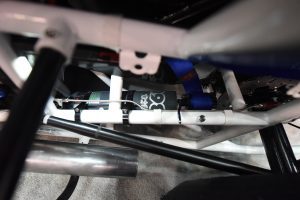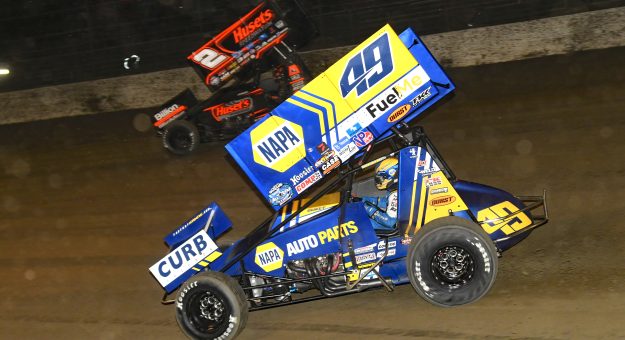Sprint car racing took a step forward in the name of safety this year with the implementation of a fire-suppression system, which is now mandatory at every World of Outlaws NOS Energy Drink Sprint Car Series race.
“The sprint cars are kind of the last thing in the racing world that hasn’t mandated fire suppression,” said Tom Devitt, who served as technical director for the World of Outlaws for 11 years before recently moving into a position focusing on research and development of safety items. “We know of four or five drivers last year that had fires. A majority of them were from a fire that came out of the fuel pump, a loose line or a broken fitting.
“I put together the specifications for the SFI testing along with the manufacturers. We introduced it to the drivers and teams at Knoxville in 2021 and everybody was in favor of it, so we rolled with it with the intention of it being mandatory in 2023.
“We did a few nozzle tests to see where we wanted to mount nozzles. The rest of it is done by SFI. They are the ones who certify it.”

The World of Outlaws rulebook mandates a bottle of at least five pounds be located in the cockpit with both a manual trigger and a thermal trigger, which will go off at a certain temperature if the driver is unconscious.
“It’s on our left side almost under the seat,” said World of Outlaws driver David Gravel, who won the first two series races this season. “I would say there were zero issues for me. My leg doesn’t hit it. I could see maybe a taller driver, his calf could hit it, but luckily, I’m a small guy.
“If it saves people in a fire, yes (it’s a good rule). As far as things that could go wrong, I hope the mounting brackets are strong because it is fairly heavy. I hope they don’t go off when they aren’t supposed to.”
Four-time World of Outlaws champion Brad Sweet has a fire-suppression system mounted in a similar position inside his race car.
“Down by the feet on the left side of the car, just below my knees,” he said. “It has a cable that runs up that you can pull if you’re in a fire situation or it has a heat sensor nozzle. It’s supposed to be a gas or liquid that turns into a gas that puts the methanol fire out. The idea is the fire is coming from the engine and it’s supposed to help protect you.
“I think any time safety updates, or when we can make these cars safer, it’s a good idea. I think there were enough situations with fires in sprint car racing and most other cars have them. It was about fitting them in there. I understand the Outlaws had to come up with some guidelines. I think the teams didn’t love how it progressed or would like to have had more input, but all in all everyone is pushing for a safer sprint car.”
Devitt notes that World of Outlaws officials have a plan in case of an accidental discharge by a fire-suppression system.
“If something does happen, if there’s an accidental trigger, if it causes the driver to stop, he’ll get his spot back and be able to finish the race without it,” Devitt said. “Before he comes back for the next race, he’ll have to have another one. So if it happens in a heat race, it will have to be replaced before the next race that night.”
According to Devitt, the World of Outlaws tech trailer carries approximately a dozen bottles.
The Tezos All Star Circuit of Champions and American Sprint Car Series haven’t mandated the fire-suppression system, which is listed in both rulebooks as highly recommended. Knoxville (Iowa) Raceway, which has long been aligned with the World of Outlaws and on the forefront of rule changes, is instituting mandatory fire-suppression systems for all sprint cars competing in each of its three weekly classes at varying times throughout the coming season.
“You go back to when we implemented full-containment seats and everyone was up in arms for six months,” said Devitt, who stated the current project in research and development is fuel-cell mounts. “Same thing with head-and-neck devices and tethers. There’s always a little bit of resistance in the beginning and then it becomes natural.”
Another change in sprint car racing this season is the introduction of new rear tires by Hoosier Racing Tires, which announced in December 2022 the change is to “feature an updated symmetrical tread pattern design and profile allowing competitors to rotate tires to extend use and longevity compared to the current tires that have been in use for over 25 years.”
